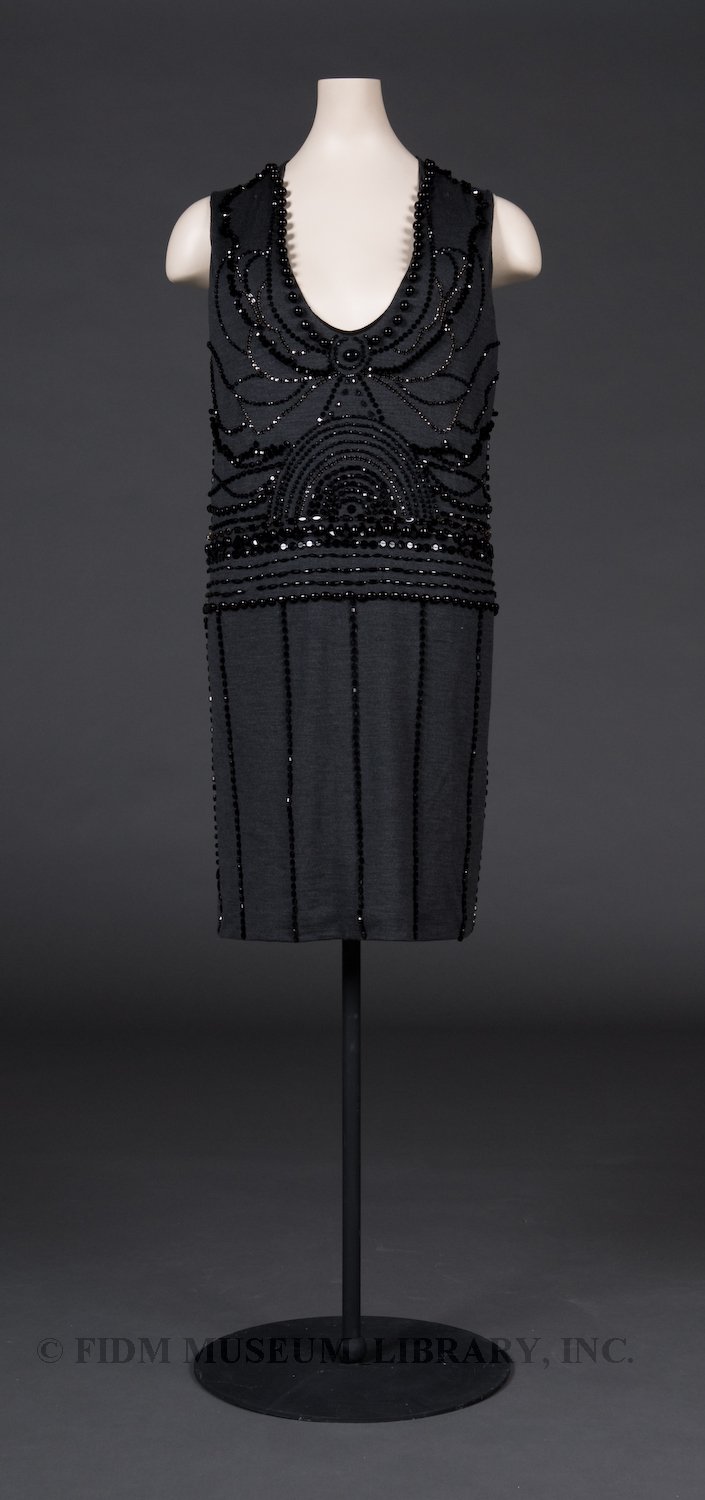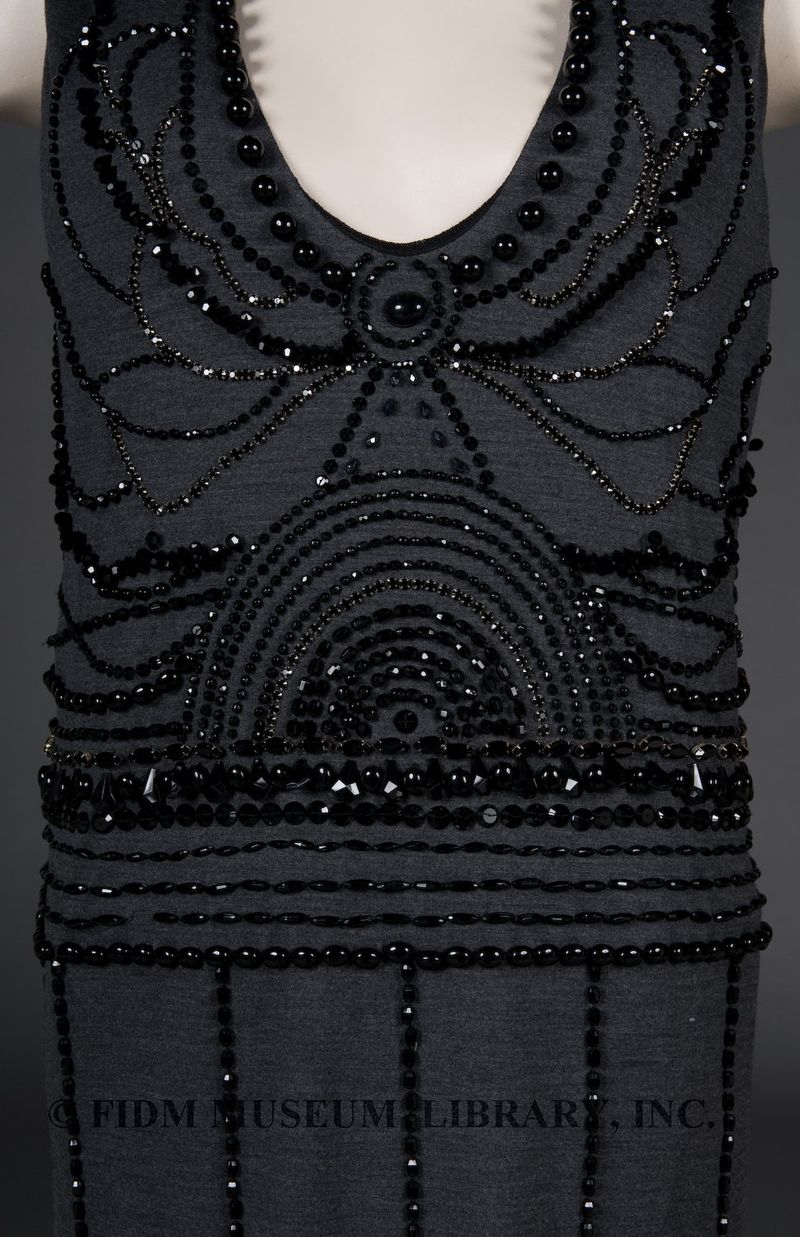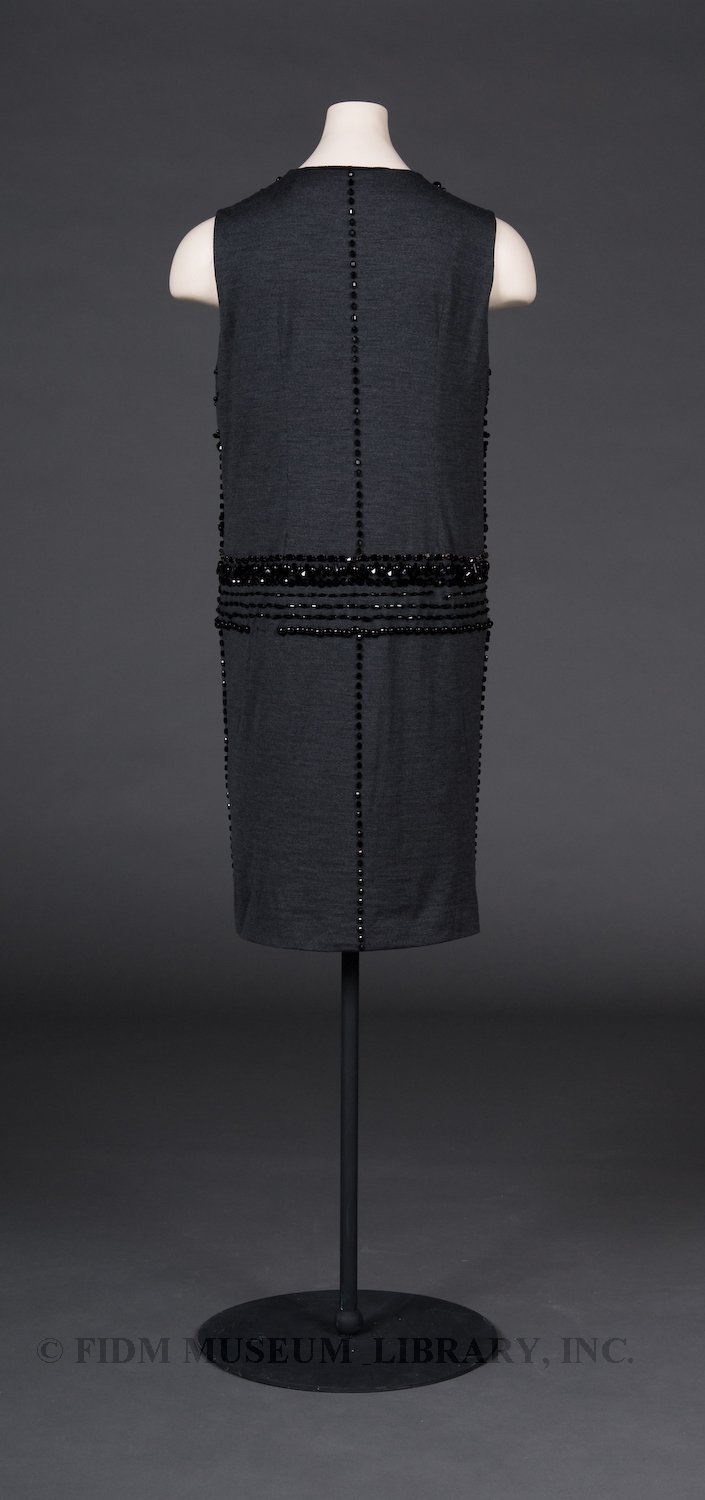Lanvin
As designer for Lanvin since 2002, Alber Elbaz has brought new life to what had become a house on the periphery of fashion. Founded in 1885 as a millinery shop, Lanvin flourished under the direction of its founder, Jeanne Lanvin. Lanvin excelled in the creation of elegant, sophisticated garments with a distinct silhouette and inventive surface decoration. After Lanvin's death in 1946, a series of designers headed the house, though none to such acclaim as Jeanne Lanvin herself. It was only with the hiring of Alber Elbaz that Lanvin began to return to a position of prominence. Though Elbaz's designs for Lanvin are lauded for their modernity, it is possible to find traces of Jeanne Lanvin's aesthetic running throughout his work.
 Evening dress Winter 2004 Alber Elbaz for Lanvin Gift of Barbara Bundy 2006.37.8
Evening dress Winter 2004 Alber Elbaz for Lanvin Gift of Barbara Bundy 2006.37.8
Jeanne Lanvin favored a simple silhouette, worked in solid colors. A good example is this robe de style, a style of dress closely associated with Lanvin. Utilizing a relatively neutral foundation allowed Lanvin to focus on the garment as a canvas for her lavish surface decorations, which would have been overwhelming if placed on a patterned fabric. Lanvin drew her inspiration from a wide variety of sources, including non-Western garments purchased on travels or at flea markets, historic European textiles and a variety of antique prints. Images and shapes from these sources were interpreted in embroidery, sequins, applique and beading on Lanvin's garments. In the 1920s, her decorative sense focused on graceful beaded swags, which appeared as surface decoration or graceful beaded streamers at neck or shoulder. Elbaz's embroidered evening dress, which features a variety of glass beads and sequins in meandering lines and swags, is a direct homage to the surface decoration seen in Lanvin garments of the 1920s.
Elbaz chose a heather gray wool for the base of his garment, a choice in tune with his earliest collections for Lanvin, which featured neutrals such as gray and brown. The utilitarian foundation pushes the dress from the realm of loveliness to something slightly edgier. This impression is reinforced by the bodice beading, which is slightly more meandering and abstract than the designs created by Jeanne Lanvin. Elbaz has created a dress that interprets elements of past Lanvin creations in a contemporary context. The dress succeeds because it capitalizes on the history of Lanvin, without relying solely on its past success. Perhaps Jeanne Lanvin, who also mined the glories of the past for her inspiration, would appreciate this modern interpretation of her aesthetic.
Further Reading: Merceron, Dean L. Lanvin. New York: Rizzoli. 2007.

